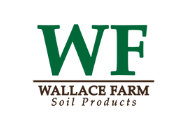Hi-Yield Calcium Nitrate (4 LBS)
$20.79
Description
Contains two important nutrients that plants need: Calcium (Ca) and Nitrogen (N). Hi-Yield Calcium Nitrate is used primarily in vegetable gardens, particularly for Tomatoes and Peppers, in the prevention of Blossom End Rot.
Blossom End Rot is a common problem with tomatoes. It is a physiological disorder (not a disease) caused by a lack of calcium. When fruits are enlarging rapidly, sufficient amounts of calcium fail to reach the end of the fruit resulting in a deficiency of calcium in the developing fruit.
Use as a Soil (Side Dress) Application or as a Foliar Spray.
Blossom End Rot is a physiological disorder of tomatoes where the tissue of the blossom end of the fruit (the part of the fruit opposite the stem) breaks down and rots, thus reducing yield.
BER is caused by a lack of calcium in the fruit. This lack of calcium may be due to low calcium levels in the soil. More often, there is plenty of calcium in the soil, but its availability for uptake and transport to the fruit is impaired. Drought stress, alternating soil moisture extremes, damage to a plant’s roots, cold soils and high concentrations of ammonium can inhibit calcium uptake.
Movement of calcium within plants is dependent on active transpiration. It moves from the roots into the fruit and leaves, via the xylem. Calcium moves more easily into leaves where it remains, it does not later move from leaves to fruits, it doesn’t have that ability.
Cultural: Four things you can do culturally to help reduce BER are:
1) Don’t plant too early when the soils are too cold.
2) Don’t cultivate too close to the plant as root damage may occur.
3) Mulch the plants and water from below keeping even moisture levels.
4) Avoid using excess Ammoniacal Nitrogen.
Prevention: Adding lime or liquid calcium to the soil when planting will supply calcium to the leaves, but NOT the fruit. You can use Hi-Yield® Calcium Nitrate (theonly form of calcium that moves into the fruit) at planting. Then, apply it again when the little fruit start to form and finally 2 to 3 weeks later.
DID YOU KNOW? Pepper, eggplant, watermelon and squash fruits can also be affected by Blossom End Rot.













